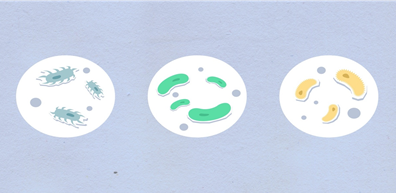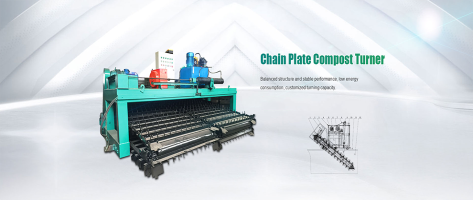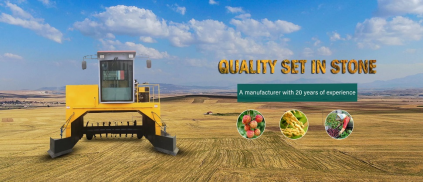Reasonable treatment and effective use of livestock manure can bring a considerable income for the majority of farmers, but also to optimize the upgrading of their own industry.
Biological organic fertilizer is a kind of fertilizer with the functions of microbial fertilizer and organic fertilizer, which is mainly derived from the residues of animals and plants (such as livestock manure, crop straw, etc.) and is composed by harmless treatment.
This determines that biological organic fertilizer has two components: (1) specific function of microorganisms. (2) treated organic waste.
(1) Specific functional microorganism
The specific functional microorganisms in biological organic fertilizer usually refer to the microorganisms, including different kinds of bacteria, fungi and actinomycetes, which can promote the transformation of soil nutrients and the growth of crops after application to soil. Specific functions can be classified as follows:
1.Nitrogen-fixing bacteria: (1) symbiotic nitrogen-fixing bacteria: mainly refers to leguminous crop rhizobia such as: rhizobia, nitrogen-fixing rhizobia, chronic ammonia-fixing rhizobia seedlings, etc.; Non leguminous crop symbiotic nitrogen-fixing bacteria such as Franklinella, Cyanobacteria, their nitrogen fixation efficiency is higher. ② Autogenous nitrogen-fixing bacteria: such as round brown nitrogen-fixing bacteria, photosynthetic bacteria, etc. (3) Joint nitrogen-fixing bacteria: refers to the microorganisms that can only be lonely when living in the root and leaf surfaces of plant rhizosphere, such as Pseudomonas genus, lipogenic nitrogen-fixing helicobacteria, etc.
2.Phosphorus dissolving (dissolving) fungi: Bacillus (such as Bacillus megacephalus, Bacillus cereus, Bacillus humilus, etc.), Pseudomonas (such as Pseudomonas fluorescens), Nitrogen-fixed bacteria, Rhizobium, Thiobacillus thiooxidans, Penicillium, Aspergillus Niger, Rhizopus, Streptomyces, etc.
3.Dissolved (dissolved) potassium bacteria: silicate bacteria (such as colloid Bacillus, colloid Bacillus, cyclosporillus), non-silicate potassium bacteria.
4.Antibiotics: Trichoderma (such as Trichoderma harzianum), actinomycetes (such as Streptomyces flatus, Streptomyces sp. sp.), Pseudomonas fluorescens, Bacillus polymyxa, Bacillus subtilis varieties, etc.
5.Rhizosphere growth-promoting bacteria and plant growth-promoting fungi.
6.Light platform bacteria: several species of the genus Pseudomonas gracilis and several species of the genus Pseudomonas gracilis. These species are facultative aerobic bacteria that can grow in the presence of hydrogen and are suitable for the production of biological organic fertilizer.
7.Insect-resistant and increased production bacteria: Beauveria bassiana, Metarhizium anisopliae, Phylloidase, Cordyceps and Bacillus.
8. Cellulose decomposition bacteria: thermophilic lateral spora, Trichoderma, Mucor, etc.
9.Other functional microorganisms: after microorganisms enter the soil, they can secrete physiological active substances to stimulate and regulate plant growth. Some of them have purification and decomposition effect on soil toxins, such as yeast and lactic acid bacteria.
2) Organic materials derived from animal residues that have been decomposed. Organic materials without fermentation, cannot be directly used to make fertilizer, also cannot come into the market.
In order to make the bacteria fully contact with the raw material and achieve a thorough fermentation, it can be stirred evenly through the compost turner machine as below:
Commonly used organic materials
(1) Feces: chicken, pig, cow, sheep, horse and other animal manure.
(2) Straw: corn straw, straw, wheat straw, soybean straw and other crop stalks.
(3) husk and bran. Rice husk powder, peanut husk powder, peanut seedling powder, rice bran, fungus bran, etc..
(4) dregs: distiller’s dregs, soy sauce dregs, vinegar dregs, furfural dregs, xylose dregs, enzyme dregs, garlic dregs, sugar dregs, etc.
(5) cake meal. Soybean cake, soybean meal, oil, rapeseed cake, etc.
(6) Other domestic sludge, filter mud of sugar refinery, sugar mud, bagasse, etc.
These raw materials can be used as auxiliary nutrient raw materials for the production of biological organic fertilizer after fermentation.
With specific microorganisms and decomposed organic materials these two conditions can be made of biological organic fertilizer.
1) Direct addition method
1, select specific microbial bacteria: can be used as one or two kinds, at most not more than three kinds, because the more choices of bacteria, compete for nutrients between each other, directly lead to the mutual function of the offset.
2. Calculation of the amount of addition: according to the standard NY884-2012 of bio-organic fertilizer in China, the effective number of living bacteria of bio-organic fertilizer should reach 0.2 million/g. In one ton of organic material, more than 2 kg of specific functional microorganisms with the effective number of living bacteria ≥10 billion/g should be added. If the number of active live bacteria is 1 billion/g, more than 20 kg will need to be added, and so on. Different countries should reasonably add in different criteria.
3. Adding method: Add the functional bacterial (powder) to the fermented organic material according to the method suggested in the operation manual, stir evenly and package it.
4. Precautions: (1) Do not be dried at high temperature above 100℃, otherwise it will kill functional bacteria. If it is necessary to dry, it should be added after drying. (2) Due to various reasons, the content of bacteria in biological organic fertilizer prepared by standard calculation method is often not up to the ideal data, so in the preparation process, functional microorganisms are generally added more than 10% higher than the ideal data.
2) secondary aging and expansion culture method
Compared with the direct addition method, this method has the advantage of saving the cost of bacteria. The downside is that experiments are needed to determine the amount of specific microbes to add, while adding a little more process. It is generally recommended that the addition amount be 20% or higher of the direct addition method and reach the national biological organic fertilizer standard through the secondary aging method. The operation steps are as follows:
1. Select specific microbial bacteria (powder): can be one or two kinds, at most not more than three kinds, because the more bacteria choose, compete for nutrients between each other, directly lead to the effect of different bacteria offset.
2. Calculation of the amount of addition: according to the standard of bio-organic fertilizer in China, the effective number of living bacteria of bio-organic fertilizer should reach 0.2 million/g. In one ton of organic material, the effective number of living bacteria ≥10 billion/g of specific functional microbial (powder) should be added at least 0.4 kg. If the number of active live bacteria is 1 billion/g, more than 4 kg will need to be added, and so on. Different countries should follow different standards for reasonable addition.
3. Adding method: the functional bacterial (powder) and wheat bran, rice husk powder, bran or other any one of them for mixing, directly add to the fermented organic materials, mixing evenly, stacked for 3-5 days to make the specific functional bacteria self-propagation.
4. Moisture and temperature control: during the stacking fermentation, the moisture and temperature should be controlled according to the biological characteristics of the functional bacteria. If the temperature is too high, the stacking height should be reduced.
5. Specific functional bacteria content detection: after the end of stacking, sampling and send to the institution with microbial detection ability to preliminary test whether the content of specific microorganisms can meet the standard, if it can be achieved, you can make biological organic fertilizer by this method. If this is not achieved, increase the addition amount of specific functional bacteria to 40% of the direct addition method and repeat the experiment until success.
6. Precautions: Do not be dried at high temperature above 100℃, otherwise it will kill functional bacteria. If it is necessary to dry, it should be added after drying.
In the production of bio-organic fertilizer after fermentation, it is generally powdery materials, which often fly with the wind in the dry season, causing the loss of raw materials and dust pollution. Therefore, in order to reduce dust and prevent caking, granulation process is often used. You can use the stirring tooth granulator in the picture above for granulation, it can be applied to humic acid, carbon black, kaolin and other difficult to granulate raw materials.
Post time: Jun-18-2021







